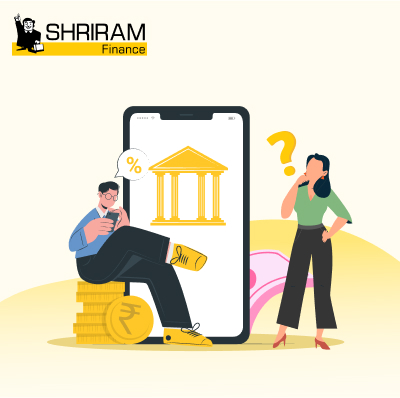The way personal loans are advertised online has changed a lot with the rise of digital technology. In the past, traditional media like newspapers and TV were used, but now loan companies use smart technology and data to reach more people and grow their business. In this article, we will look at how personal loan advertising has moved from old methods to using the latest digital marketing tools.
Defining Traditional Personal Loan Marketing
In the pre-digital era, lending companies had limited options to promote their personal loan products. Common traditional loan advertising tactics included:
- Print Advertisements: Newspaper and magazine ads highlighting loan features and contact info.
- Radio Spots: Brief audio segments talking about loans on FM and AM stations.
- TV Commercials: Short video ads showcasing loans on network and cable channels.
- Billboards: Large print displays along highways and busy urban areas advertise loan rates and terms.
- Direct Mail: Mass paper flyer campaigns sent to homes promoting new loan offers.
- In-Branch Brochures: Informational loan pamphlets and applications at bank branches.
While these conventional channels had a broad reach, they lacked precision and offered no customisation or targeting. It conveyed the same message for everyone. They also provided no built-in tracking of effectiveness or return on investment.
The Digital Marketing Game Changer
The rise of the internet and mobile devices fundamentally altered marketing. With consumers shifting their attention online, lending companies raced to establish digital presences and promote products across new channels, including:
- Websites: Detailed loan info, applications, rate calculators and online account access.
- Search Ads: Targeted text advertisements alongside Google search results for related loan keywords.
- Display Ads: Graphical advertisements across news sites, social media platforms and Google Display Network.
- Affiliate Links: Third-party publishers and bloggers earn commissions by referring loan applicants.
- Email Campaigns: Personalised loan offers and promotions sent to subscribers' inboxes.
- Social Media: Facebook, Instagram and LinkedIn ads focused on specific demographics.
- SMS and Text Messages: Contextual loan promotions sent directly to mobile phones.
The digital era opened up unlimited possibilities for data-driven targeting, optimisation and complete tracking of every rupee spent. Leading platforms also allowed more dynamic and interactive content compared to static traditional channels.
Current Digital Marketing Best Practices
Today’s top financial institutions leverage a mix of the following digital strategies:
- SEO Content: Top financial institutions invest heavily in creating valuable, relevant and engaging content like blog posts, guides and FAQ pages to drive organic search traffic to their sites. Well-optimised loan-related content allows sites to rank high when prospective borrowers are searching for information and solutions online.
- Google Ads: Google search, display and YouTube video ads are utilised to connect with audiences showing interest to research or apply for personal loans. Advanced targeting and bidding strategies keep ads very focused on serving only to the most likely applicants when they are actively exploring and comparing loan options online.
- CRM Database: Marketing Email and SMS campaigns play a pivotal role in digital marketing plans by allowing for personalised, behaviour-based communication with all existing clients and past applicants in CRM systems. Loan offers and promotions are sent to specific groups based on their details and how they use the website, to encourage more people to apply.
- Social Listening: Monitoring key social media platforms is crucial for identifying brand mentions, responding quickly to loan-related queries and understanding broader conversations amongst target demographics. This enables institutions to join discussions, provide helpful information, address issues and learn about emerging consumer needs.
- Competitor Analysis: Regular analysis of competitors’ digital activities, including paid campaigns, website updates, content creation, and special offers, provides useful data to find new customers. Tactics working well for other lenders can often be replicated or optimised further to attract customers in the same target groups.
- Analytics and Testing: With endless options for targeting and content, continual testing and optimisation guided by campaign analytics and performance data are vital to improving results over time. Metrics like cost per conversion/acquisition help understand return on investment and determine optimal budget allocation across digital channels.
The smartest lenders use machine learning and AI to find the best websites, times, and messages to attract and get good loan applicants.
The Future of Digital Personal Loan Marketing
In the future, lenders will keep using new technologies and focus more on personalised and relevant digital marketing, such as:
- Predictive Analytics: More advanced data analysis methods will help lenders study many customer details and behaviors to find very specific groups of people who are most likely to respond to offers, need loans, or might miss payments. These detailed predictions help create highly personalised messages.
- Automated Workflows: Personalised digital campaigns will change based on what each person likes and does on the website, showing the right content and offers at every step, from learning about the loan to applying. Automated systems make these experiences unique for everyone.
- Expanded Social Targeting: New social sites will offer more ways to reach specific groups interested in financial products. Popular social platforms are also improving their targeting options to be more precise.
- Omni-Channel Integration: Messages and experiences will be customised based on each person’s actions and shared smoothly across all online and offline channels. Personalisation will stay consistent everywhere, using customer data and smart predictions.
- Location and Geo-Targeting: Using mobile GPS and geo-fencing, banks and financial institutions can send ads and offers to people who are near their branch locations. This helps combine the ease of digital marketing with the option to visit a local branch and get personal advice.
Lenders will extract data from every interaction to understand the ideal journey for each customer. The future lies in using technology to deliver helpful, personalised money solutions, not just selling financial products.
Conclusion
The personal loan marketing evolution has been radically innovative on many levels. From the use of physical handouts to discussions of artificial intelligence, the personal loan marketing process has become easier, fun, and more relevant.
For banks and loan providers, being informed is no longer just about information technology. It is more about people, feedback, dependability, and trust built through engagement.
The change from traditional to digital is not about what is best now and what was best before, it is mandatory. And lenders such as Shriram Finance who got on board first, with accountability and creativity, are guaranteed the loyalty of today's borrowers who just happen to be digital.
































